Grow Carrots at Home? Absolutely! Imagine plucking vibrant, sweet carrots straight from your own backyard – fresher than anything you’ll find at the grocery store. It’s easier than you think, and this DIY guide is your secret weapon to a bountiful carrot harvest, even if you’re a complete beginner.
For centuries, carrots have been a staple in diets worldwide. From their humble beginnings as wild, spindly roots to the vibrant orange delights we know today, carrots have nourished civilizations and added a touch of sweetness to countless dishes. Did you know that originally, carrots weren’t even orange? They came in shades of purple, white, and yellow! The orange carrot, a result of Dutch breeding in the 17th century, became popular and is now the most common variety.
But why should you bother learning to grow carrots at home? Well, for starters, homegrown carrots taste infinitely better! Plus, you control exactly what goes into them – no harmful pesticides or chemicals. In today’s world, where healthy eating and sustainable living are more important than ever, having your own supply of fresh, organic carrots is a fantastic way to contribute. And let’s be honest, there’s something incredibly satisfying about nurturing a plant from seed to table. I’m going to show you some simple, effective tricks and hacks that will have you harvesting delicious carrots in no time. Get ready to get your hands dirty and enjoy the fruits (or rather, vegetables!) of your labor!
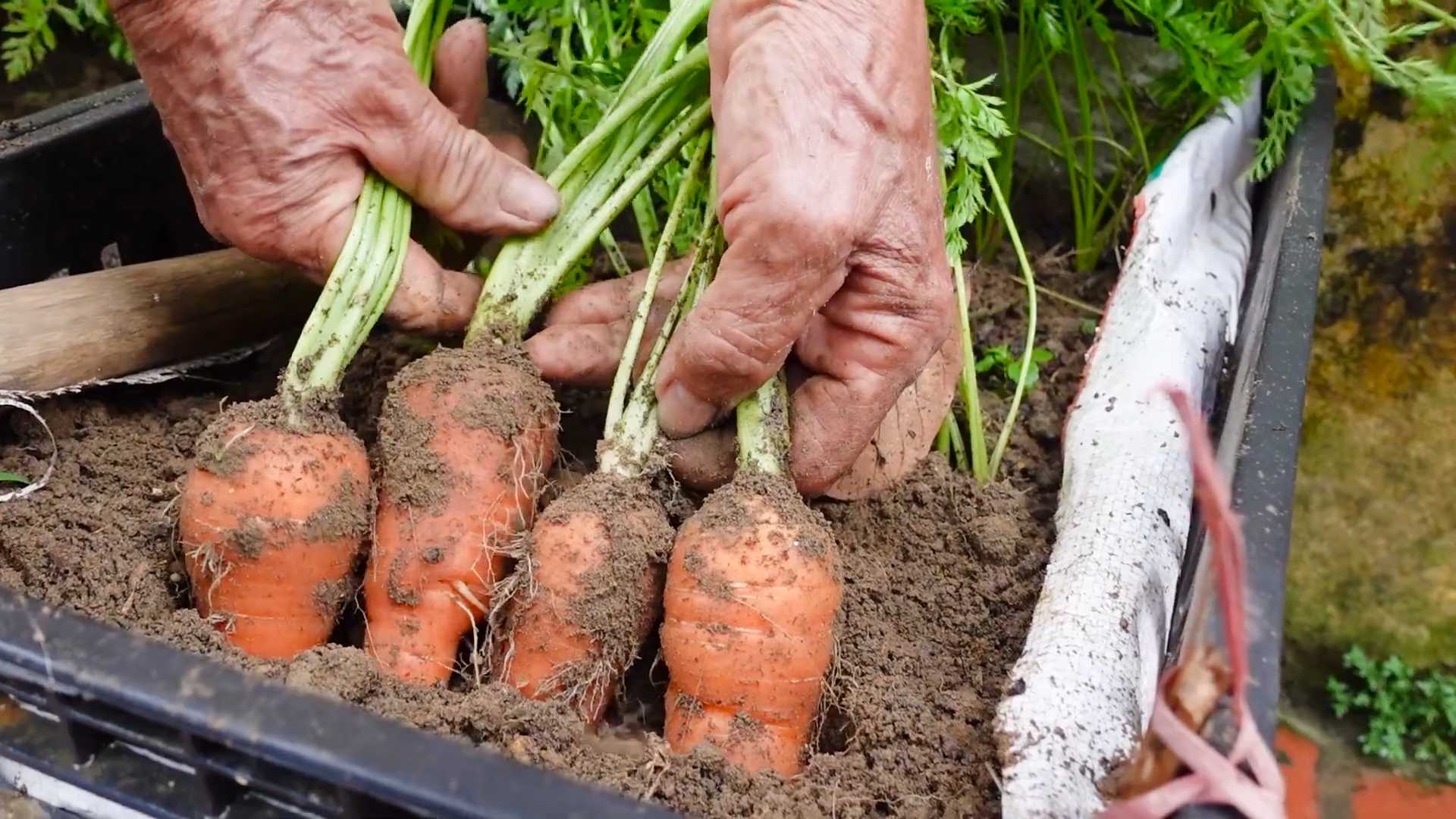
Growing Carrots at Home: A Beginner’s Guide
Hey there, fellow gardening enthusiasts! Ever dreamt of pulling fresh, crunchy carrots straight from your own backyard? Well, dream no more! Growing carrots at home is surprisingly easy and rewarding. I’m going to walk you through everything you need to know, from choosing the right variety to harvesting your delicious bounty. Let’s get our hands dirty!
Choosing the Right Carrot Variety
First things first, let’s talk carrots! There are tons of different varieties, each with its own unique characteristics. Here’s a quick rundown to help you pick the perfect one for your garden:
* Nantes: These are classic, cylindrical carrots with a sweet flavor. They’re relatively short and mature quickly, making them a great choice for beginners.
* Danvers: These are longer, tapered carrots with a robust flavor. They’re known for their good storage capabilities.
* Chantenay: These are short, thick carrots with a broad shoulder. They’re ideal for heavy or rocky soils.
* Imperator: These are the long, slender carrots you often see in supermarkets. They require deep, loose soil to grow properly.
* Round Carrots (Parisian): These are cute, golf ball-sized carrots that are perfect for containers or shallow soils.
Consider your soil type, growing space, and personal preferences when making your selection. I personally love Nantes for their sweetness and ease of growth.
Preparing the Soil: The Key to Success
Carrots need loose, well-drained soil to thrive. Rocky or compacted soil will result in stunted, misshapen carrots. Trust me, I’ve learned this the hard way! Here’s how to prepare your soil for success:
* Choose a sunny location: Carrots need at least 6 hours of sunlight per day.
* Clear the area: Remove any rocks, weeds, or debris from the planting area.
* Loosen the soil: Use a garden fork or tiller to loosen the soil to a depth of at least 12 inches. This is crucial for long carrot varieties.
* Amend the soil: Incorporate plenty of compost or well-rotted manure into the soil. This will improve drainage, fertility, and soil structure.
* Remove clumps: Break up any large clumps of soil to create a fine, even texture.
* Avoid fresh manure: Fresh manure can cause forked roots, so stick to well-rotted compost or manure.
Planting Carrot Seeds: Getting Started
Now for the fun part: planting! Carrot seeds are tiny, so it’s important to sow them carefully.
1. Create shallow furrows: Use your finger or a garden tool to create shallow furrows about 1/4 to 1/2 inch deep and 1-2 inches apart.
2. Sow the seeds: Sprinkle the seeds thinly along the furrows. Don’t overcrowd them, as this will make thinning more difficult later on.
3. Cover the seeds: Gently cover the seeds with a thin layer of soil.
4. Water gently: Water the area gently with a watering can or hose with a gentle spray nozzle. Avoid washing away the seeds.
5. Keep the soil moist: Keep the soil consistently moist until the seeds germinate, which usually takes 1-3 weeks. You can cover the area with burlap or a piece of cardboard to help retain moisture. Just remember to remove it once the seedlings emerge.
Thinning Carrot Seedlings: Giving Them Space to Grow
Thinning is essential for growing healthy, well-formed carrots. If you don’t thin them, they’ll compete for resources and end up small and spindly.
1. Wait until seedlings are 1-2 inches tall: Once your seedlings have developed a few true leaves, it’s time to thin them.
2. Thin to 1-2 inches apart: Carefully pull out the weaker seedlings, leaving the strongest ones spaced 1-2 inches apart.
3. Thin again later: As the carrots grow larger, you may need to thin them again to 3-4 inches apart.
4. Water after thinning: Water the area after thinning to help settle the soil around the remaining seedlings.
5. Don’t compost diseased seedlings: If any of the seedlings show signs of disease, discard them in the trash rather than composting them.
Watering and Fertilizing: Keeping Your Carrots Happy
Carrots need consistent moisture to grow properly, but they don’t like to be waterlogged.
* Water deeply and regularly: Water deeply whenever the top inch of soil feels dry to the touch.
* Avoid overhead watering: Overhead watering can promote fungal diseases. Water at the base of the plants instead.
* Fertilize sparingly: Carrots don’t need a lot of fertilizer. A light feeding of a balanced fertilizer a few weeks after thinning can be beneficial.
* Avoid high-nitrogen fertilizers: High-nitrogen fertilizers can promote leafy growth at the expense of root development.
Weed Control: Protecting Your Precious Carrots
Weeds can compete with carrots for nutrients and water, so it’s important to keep them under control.
* Hand-pull weeds: The best way to control weeds is to hand-pull them regularly.
* Mulch: Apply a layer of mulch around the carrots to suppress weed growth and retain moisture.
* Be careful when weeding: Be careful not to disturb the carrot roots when weeding.
Pest and Disease Control: Keeping Problems at Bay
Carrots are generally pest-resistant, but they can be susceptible to certain problems.
* Carrot rust flies: These pests lay their eggs near the base of the plants, and the larvae tunnel into the roots. Cover your carrots with row covers to prevent carrot rust flies from laying their eggs.
* Nematodes: These microscopic worms can damage carrot roots. Rotate your crops and amend the soil with organic matter to control nematodes.
* Leaf blight: This fungal disease can cause spots on the leaves. Improve air circulation and avoid overhead watering to prevent leaf blight.
* Aphids: These tiny insects can suck the sap from carrot leaves. Spray them with a strong stream of water or insecticidal soap.
Harvesting Carrots: The Moment of Truth
The time to harvest your carrots will depend on the variety and growing conditions.
1. Check the size: Check the size of the carrots by gently pulling back the soil around the tops.
2. Harvest when mature: Harvest when the carrots have reached the desired size and color.
3. Loosen the soil: Loosen the soil around the carrots with a garden fork before pulling them.
4. Pull gently: Grasp the carrot tops firmly and pull gently, twisting if necessary.
Hey there, fellow gardening enthusiasts! Ever dreamt of pulling fresh, crunchy carrots straight from your own backyard? Well, dream no more! Growing carrots at home is surprisingly easy and rewarding. I’m going to walk you through everything you need to know, from choosing the right variety to harvesting your delicious bounty. Let’s get our hands dirty!
Choosing the Right Carrot Variety
First things first, let’s talk carrots! There are tons of different varieties, each with its own unique characteristics. Here’s a quick rundown to help you pick the perfect one for your garden:
* Nantes: These are classic, cylindrical carrots with a sweet flavor. They’re relatively short and mature quickly, making them a great choice for beginners.
* Danvers: These are longer, tapered carrots with a robust flavor. They’re known for their good storage capabilities.
* Chantenay: These are short, thick carrots with a broad shoulder. They’re ideal for heavy or rocky soils.
* Imperator: These are the long, slender carrots you often see in supermarkets. They require deep, loose soil to grow properly.
* Round Carrots (Parisian): These are cute, golf ball-sized carrots that are perfect for containers or shallow soils.
Consider your soil type, growing space, and personal preferences when making your selection. I personally love Nantes for their sweetness and ease of growth.
Preparing the Soil: The Key to Success
Carrots need loose, well-drained soil to thrive. Rocky or compacted soil will result in stunted, misshapen carrots. Trust me, I’ve learned this the hard way! Here’s how to prepare your soil for success:
* Choose a sunny location: Carrots need at least 6 hours of sunlight per day.
* Clear the area: Remove any rocks, weeds, or debris from the planting area.
* Loosen the soil: Use a garden fork or tiller to loosen the soil to a depth of at least 12 inches. This is crucial for long carrot varieties.
* Amend the soil: Incorporate plenty of compost or well-rotted manure into the soil. This will improve drainage, fertility, and soil structure.
* Remove clumps: Break up any large clumps of soil to create a fine, even texture.
* Avoid fresh manure: Fresh manure can cause forked roots, so stick to well-rotted compost or manure.
Planting Carrot Seeds: Getting Started
Now for the fun part: planting! Carrot seeds are tiny, so it’s important to sow them carefully.
1. Create shallow furrows: Use your finger or a garden tool to create shallow furrows about 1/4 to 1/2 inch deep and 1-2 inches apart.
2. Sow the seeds: Sprinkle the seeds thinly along the furrows. Don’t overcrowd them, as this will make thinning more difficult later on.
3. Cover the seeds: Gently cover the seeds with a thin layer of soil.
4. Water gently: Water the area gently with a watering can or hose with a gentle spray nozzle. Avoid washing away the seeds.
5. Keep the soil moist: Keep the soil consistently moist until the seeds germinate, which usually takes 1-3 weeks. You can cover the area with burlap or a piece of cardboard to help retain moisture. Just remember to remove it once the seedlings emerge.
Thinning Carrot Seedlings: Giving Them Space to Grow
Thinning is essential for growing healthy, well-formed carrots. If you don’t thin them, they’ll compete for resources and end up small and spindly.
1. Wait until seedlings are 1-2 inches tall: Once your seedlings have developed a few true leaves, it’s time to thin them.
2. Thin to 1-2 inches apart: Carefully pull out the weaker seedlings, leaving the strongest ones spaced 1-2 inches apart.
3. Thin again later: As the carrots grow larger, you may need to thin them again to 3-4 inches apart.
4. Water after thinning: Water the area after thinning to help settle the soil around the remaining seedlings.
5. Don’t compost diseased seedlings: If any of the seedlings show signs of disease, discard them in the trash rather than composting them.
Watering and Fertilizing: Keeping Your Carrots Happy
Carrots need consistent moisture to grow properly, but they don’t like to be waterlogged.
* Water deeply and regularly: Water deeply whenever the top inch of soil feels dry to the touch.
* Avoid overhead watering: Overhead watering can promote fungal diseases. Water at the base of the plants instead.
* Fertilize sparingly: Carrots don’t need a lot of fertilizer. A light feeding of a balanced fertilizer a few weeks after thinning can be beneficial.
* Avoid high-nitrogen fertilizers: High-nitrogen fertilizers can promote leafy growth at the expense of root development.
Weed Control: Protecting Your Precious Carrots
Weeds can compete with carrots for nutrients and water, so it’s important to keep them under control.
* Hand-pull weeds: The best way to control weeds is to hand-pull them regularly.
* Mulch: Apply a layer of mulch around the carrots to suppress weed growth and retain moisture.
* Be careful when weeding: Be careful not to disturb the carrot roots when weeding.
Pest and Disease Control: Keeping Problems at Bay
Carrots are generally pest-resistant, but they can be susceptible to certain problems.
* Carrot rust flies: These pests lay their eggs near the base of the plants, and the larvae tunnel into the roots. Cover your carrots with row covers to prevent carrot rust flies from laying their eggs.
* Nematodes: These microscopic worms can damage carrot roots. Rotate your crops and amend the soil with organic matter to control nematodes.
* Leaf blight: This fungal disease can cause spots on the leaves. Improve air circulation and avoid overhead watering to prevent leaf blight.
* Aphids: These tiny insects can suck the sap from carrot leaves. Spray them with a strong stream of water or insecticidal soap.
Harvesting Carrots: The Moment of Truth
The time to harvest your carrots will depend on the variety and growing conditions.
1. Check the size: Check the size of the carrots by gently pulling back the soil around the tops.
2. Harvest when mature: Harvest when the carrots have reached the desired size and color.
3. Loosen the soil: Loosen the soil around the carrots with a garden fork before pulling them.
4. Pull gently: Grasp the carrot tops firmly and pull gently, twisting if necessary.
5. Wash and store: Wash the carrots and store them in the refrigerator in a plastic bag or container.
Troubleshooting: Common Carrot Growing Problems
Even with the best care, you might encounter some problems along the way. Here are a few common issues and how to address them:
* Forked roots: This is often caused by rocky or compacted soil. Make sure to prepare the soil properly before planting.
* Small carrots: This can be caused by overcrowding, poor soil, or insufficient sunlight. Thin your seedlings, amend the soil, and make sure your carrots are getting enough sun.
* Bitter taste: This can be caused by hot weather or inconsistent watering. Water deeply and regularly, and provide shade during the hottest part of the day.
* Cracked carrots: This is often caused by inconsistent watering. Water deeply and regularly, especially during dry spells.
Growing Carrots in Containers: A Great Option for Small Spaces
Don’t have a garden? No problem! You can easily grow carrots in containers.
* Choose a large container: Select a container that is at least 12 inches deep and wide.
* Use a well-draining potting mix: Use a high-quality potting mix that drains well.
* Plant the seeds: Plant the seeds as described above.
* Thin the seedlings: Thin the seedlings to 2-3 inches apart.
* Water and fertilize: Water and fertilize as needed.
* Provide sunlight: Place the container in a sunny location.
Extending the Harvest: Succession Planting
To enjoy a continuous harvest of carrots, try succession planting.
* Plant seeds every 2-3 weeks: Plant a new batch of seeds every 2-3 weeks throughout the growing season.
* Choose different varieties: Choose varieties with different maturity dates to extend the harvest even further.
Enjoying Your Homegrown Carrots: Delicious Recipes
Now that you’ve harvested your delicious carrots, it’s time to enjoy them! Here are a few of my favorite ways to use homegrown carrots:
*
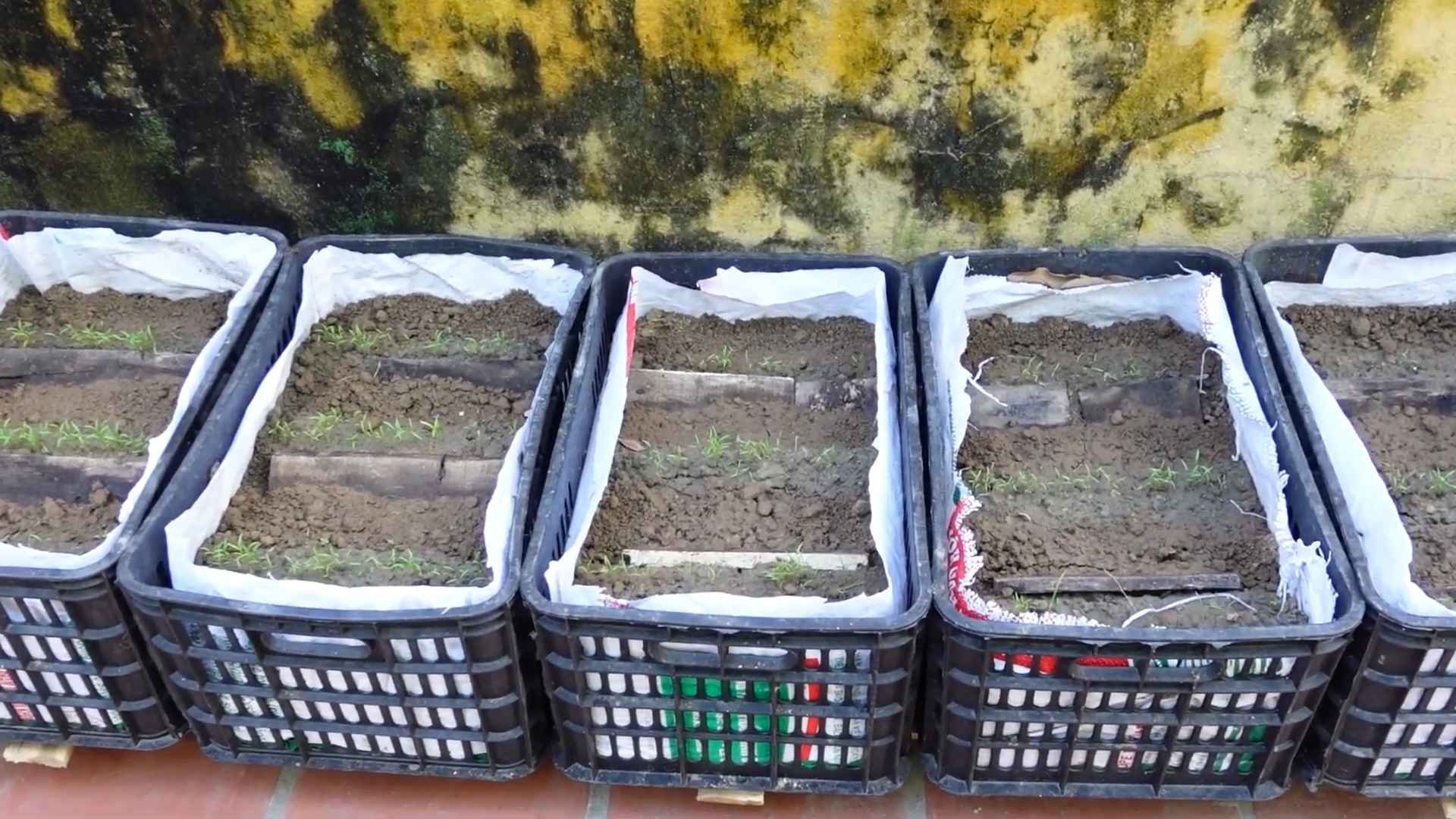
Conclusion
So, there you have it! Growing carrots at home isn’t just a whimsical gardening dream; it’s a tangible reality accessible to anyone, regardless of space or experience. We’ve walked through the simple steps, debunked common myths, and armed you with the knowledge to cultivate your own vibrant, delicious carrot crop.
Why is this DIY trick a must-try? Because it’s empowering! Imagine the satisfaction of pulling a perfectly formed, earthy-sweet carrot from the soil, knowing you nurtured it from seed to table. It’s a connection to nature, a sustainable practice, and a guaranteed way to enjoy fresher, more flavorful carrots than you’ll ever find in a grocery store. Plus, you control everything – from the soil composition to the watering schedule – ensuring your carrots are grown organically and free from harmful pesticides.
Beyond the basic method, the possibilities are endless. Experiment with different carrot varieties! Try Nantes for their classic cylindrical shape, Chantenay for their short, stout form perfect for shallow containers, or even colorful heirloom varieties like Purple Haze or Yellow Stone. Consider companion planting. Marigolds deter nematodes, while rosemary can repel carrot flies. Play around with container gardening. If you’re short on space, a large pot or even a repurposed container can become a thriving carrot patch. Vertical gardening is also an option for those with limited ground space.
Don’t be afraid to get your hands dirty and embrace the learning process. Gardening is all about experimentation, and even if you encounter a few bumps along the way, the reward of homegrown carrots is well worth the effort. Remember, the key to successful growing carrots at home lies in consistent care, proper soil preparation, and a little bit of patience.
We wholeheartedly encourage you to embark on this rewarding gardening adventure. Start small, learn as you go, and most importantly, have fun! And once you’ve harvested your first batch of homegrown carrots, we want to hear all about it! Share your experiences, tips, and photos in the comments below. Let’s build a community of home carrot growers and inspire others to discover the joy of cultivating their own food. Your success story could be the inspiration someone else needs to start their own garden. Happy growing!
Frequently Asked Questions (FAQ)
What kind of soil is best for growing carrots at home?
Carrots thrive in loose, well-draining soil that is free of rocks and clumps. Rocky soil can cause carrots to fork or become stunted. A sandy loam is ideal. Amend heavy clay soil with compost, aged manure, or peat moss to improve drainage and aeration. The soil pH should be between 6.0 and 6.8. Before planting, till the soil to a depth of at least 12 inches to allow the carrots to grow long and straight. Consider raised beds or containers if your native soil is particularly poor.
How often should I water my carrots?
Consistent moisture is crucial for carrot development. Water deeply and regularly, especially during dry periods. Aim for about 1 inch of water per week. Avoid overwatering, which can lead to root rot. Check the soil moisture by sticking your finger about an inch deep. If the soil feels dry, it’s time to water. Mulching around the plants can help retain moisture and suppress weeds. During germination, keep the soil consistently moist but not waterlogged.
When is the best time to plant carrots?
Carrots are a cool-season crop and are best planted in early spring or late summer for a fall harvest. In warmer climates, you can plant carrots throughout the winter. For a spring crop, sow seeds 2-3 weeks before the last expected frost. For a fall crop, sow seeds 10-12 weeks before the first expected frost. Successive sowings every 2-3 weeks will ensure a continuous harvest throughout the growing season. Check your local frost dates to determine the optimal planting time for your region.
How do I thin carrot seedlings?
Thinning is essential to give carrots enough space to develop properly. Once the seedlings are about 2 inches tall, thin them to about 1-2 inches apart. When they are about 4 inches tall, thin them again to 3-4 inches apart. Gently pull out the excess seedlings, being careful not to disturb the roots of the remaining plants. You can eat the thinned seedlings as microgreens. Thinning prevents overcrowding, which can lead to smaller, misshapen carrots.
What are some common pests and diseases that affect carrots?
Carrot rust flies, nematodes, and aphids are common pests that can damage carrots. Carrot rust flies lay their eggs near the base of the plants, and the larvae tunnel into the roots. Nematodes are microscopic worms that feed on the roots, causing stunted growth. Aphids suck sap from the leaves, weakening the plants. Diseases such as leaf blight and root rot can also affect carrots. Use row covers to protect plants from pests. Practice crop rotation to prevent soilborne diseases. Ensure good drainage to avoid root rot.
How do I harvest carrots?
Carrots are typically ready to harvest 60-80 days after planting, depending on the variety. Check the seed packet for specific maturity dates. Gently loosen the soil around the carrots with a garden fork or trowel. Grasp the carrot tops firmly and pull straight up. If the carrots are difficult to pull, water the soil beforehand to make it easier. Harvest carrots when they have reached the desired size and color. You can leave carrots in the ground for a longer period in cool weather, but they may become woody or split if left too long.
Can I grow carrots in containers?
Yes, carrots can be successfully grown in containers. Choose a container that is at least 12 inches deep and wide to accommodate the root growth. Use a well-draining potting mix. Sow seeds directly into the container and thin as needed. Water regularly and fertilize with a balanced fertilizer. Container-grown carrots may require more frequent watering than those grown in the ground. Select shorter, rounder carrot varieties that are better suited for container gardening.
How do I store harvested carrots?
Remove the carrot tops, leaving about 1/2 inch of stem. Gently brush off any excess soil. Store carrots in a cool, dark, and humid place, such as a refrigerator or root cellar. Place the carrots in a plastic bag or container with a damp paper towel to prevent them from drying out. Carrots can be stored for several weeks or even months under the right conditions. You can also freeze carrots by blanching them for a few minutes and then placing them in freezer bags.
What are some good companion plants for carrots?
Companion planting can help deter pests, attract beneficial insects, and improve the overall health of your carrot plants. Good companion plants for carrots include onions, garlic, rosemary, sage, marigolds, and lettuce. Onions and garlic repel carrot rust flies. Rosemary and sage deter carrot flies. Marigolds repel nematodes. Lettuce provides shade and helps retain moisture in the soil. Avoid planting carrots near fennel or dill, as they can inhibit carrot growth.
My carrots are forking or splitting. What am I doing wrong?
Forking or splitting carrots are often caused by rocky or compacted soil. Remove any rocks or debris from the soil before planting. Amend heavy clay soil with compost or other organic matter to improve drainage and aeration. Avoid over-fertilizing with nitrogen, which can also cause forking. Ensure consistent watering to prevent the carrots from drying out and cracking. Choose carrot varieties that are less prone to forking.

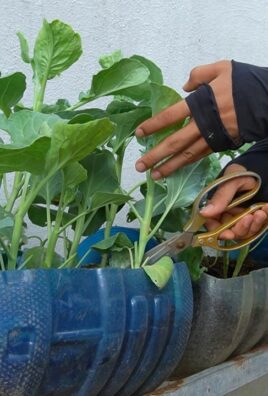
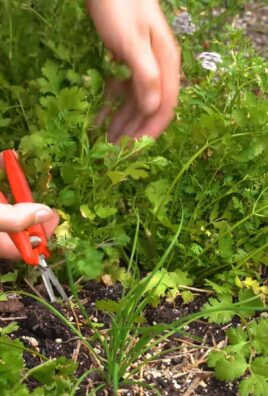
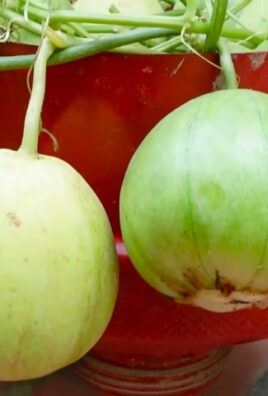
Leave a Comment